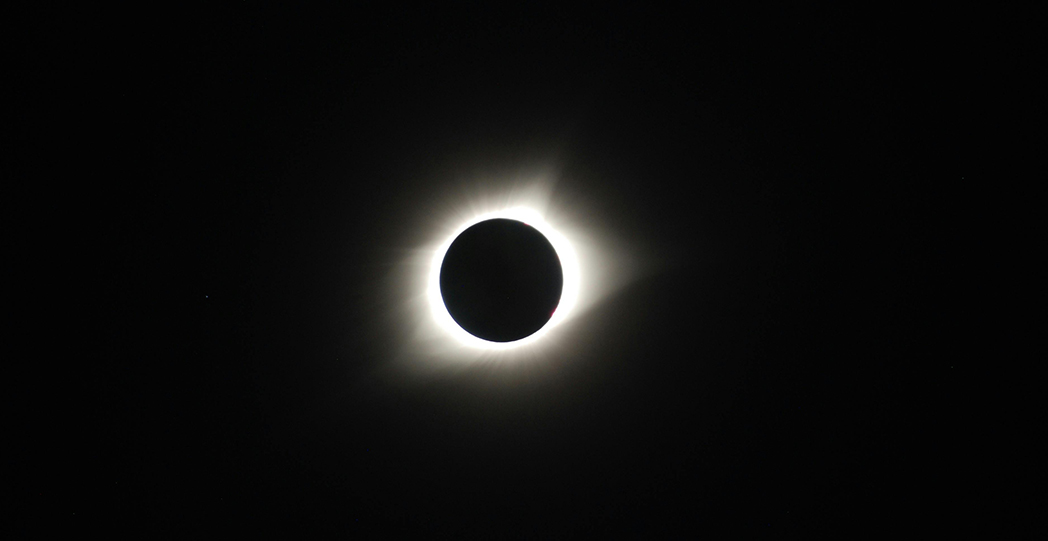April 8 is going to be an exciting astronomical event in North America. A solar eclipse will be visible from Mexico, the US and Canada. Most of the continent will see a partial eclipse, but those in a narrow path (relatively speaking) will get to see a total eclipse of the Sun. In the US, the path will run northeast from Texas to Maine.
What is a solar eclipse?
Some of you might remember this from science class. A solar eclipse happens when the Moon temporarily blocks all or part of the Sun's light from reaching the Earth. This celestial event happens only during a new moon, when the moon's orbit brings it into alignment with the sun from the perspective of Earth. There are three main types of solar eclipses: total, partial, and annular.
Total- the Moon completely covers the Sun, obscuring its entire disk and causing a temporary darkness known as totality. Total solar eclipses are only visible along a narrow path on Earth's surface. The duration of totality depends on factors such as the Moon's distance from Earth and the Earth's distance from the Sun.
Partial- When the Sun, Moon and Earth are not exactly aligned. The Sun appears to have a dark shadow on part of its surface.
Annular – This eclipse happens when the Moon is farthest from Earth. The Moon looks like a dark disk on top of the Sun’s disk, creating what’s known as the “ring of fire” around the Moon.
How to safely watch a solar eclipse
A solar eclipse is one of nature’s most awe-inspiring sights, but you have to be careful. Follow these tips to protect yourself and have the best possible experience.
- The first rule is the most important: never look directly at the Sun without proper eye protection. It could cause permanent eye damage, including blindness.
- Wear solar viewing glasses. Regular sunglasses aren’t enough to protect you from the Sun’s powerful rays. Make sure to find special your solar viewing glasses have ISO 12312-2:2015 certification and have the manufacturer’s name and address printed somewhere on the product. They’re pretty easy to find in the months leading up to an eclipse.
• Inspect your solar viewing glasses. Check them for scratches and holes. If they look compromised in any way, pick up a new pair. A damaged pair is not worth damaging your eyes!
Keep your solar viewing glasses on during the eclipse. The one exception is when the Sun is completely covered during a total eclipse. Just remember to put them back on as soon as the Sun begins to peek around the Moon again.
Watch the eclipse indirectly through a pinhole camera. It’s a safe and fun way to watch the Moon’s magic, and it’s a great art and science project for kids. NASA has an easy tutorial on how to make one here.
Protect your camera. An eclipse makes for some eerily cool photography, but you’ll want to treat your camera just like your eyes. Never point it directly at the Sun without protection. Be sure to use an appropriate solar filter to keep from damaging your camera’s sensor.
Find the right location. Don’t let your excitement get in the way of common sense. Find an area clear of obstructions so you’re not tripping and falling while looking at the sky. Be sure to give each other plenty of space to “ooh and ahh” as well.
Make it an event
Solar eclipses don’t come around that often. Why not make the most of it with a trip? Consider staying somewhere along the highly anticipated path of the total eclipse from Texas to Maine. Fortunately for our guests, we have a few hotels that are close to the astronomical action.
Joint Base San Antonio, Texas
San Antonio is right in the path of the total eclipse, and you can choose from several IHG Army Hotels here. They’re conveniently located less than 5 miles from downtown San Antonio and several attractions including the historic Alamoand the city’s famed RiverWalk, where you can explore some of the city’s finest restaurants, boutiques and nightclubs.
Fort Campbell, Kentucky
Head just about 90 minutes northwest to Paducah, Kentucky to take in the total solar eclipse. Along the way, you’ll drive through the beautiful Land Between the Lakes Natural Recreation Area featuring an 1850s working farm, woodlands nature station and more. While on Fort Campbell, check out the Don F. Pratt Museum to learn more about the legendary 101st Airborne Division. If you’re feeling extra adventurous, battle some buddies at Fort Campbell’s paintball field.
Fort Drum, New York
Fort Drum is fortunate to be in the path of the total eclipse along with the rest of northern New York State. Located in the Thousand Islands region, it’s beautiful there all year long. You have the Adirondacks to the east, Great Lakes to the west, and Canada is a short drive to the north. Be sure to check out the nearby Fort Drum Museum, Zoo New York and the Black River Drive-In, where the eclipse will be projected on the big screen.
Whether you’re in an area of partial or total eclipse on April 8, we hope you enjoy watching one of nature’s most exciting shows. We’re also about to enter a busy travel season full of vacations and PCS. Whatever your reason for traveling this spring and summer, we look forward to seeing you soon.
To book a room at IHG Army hotels, visit www.ihgarmyhotels.com.
Lendlease is the owner, design-builder, asset manager, and the exclusive developer for the Privatization of Army Lodging (PAL) portfolio, the Department of Defense’s only lodging privatization program. IHG Hotel & Resorts is the hotel operator and manager of IHG Army Hotels.




